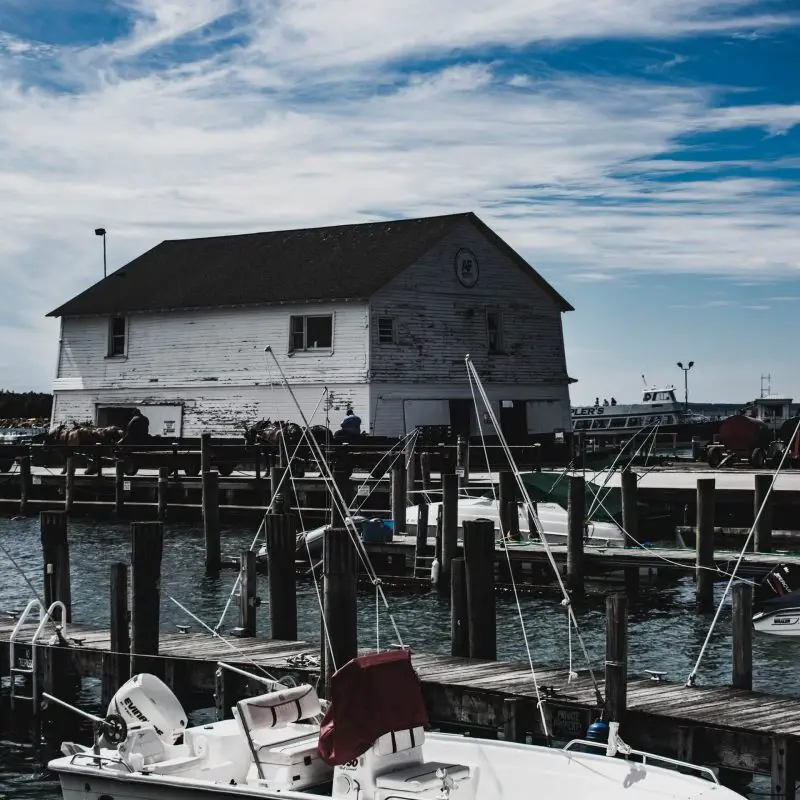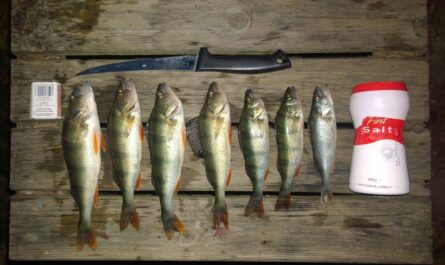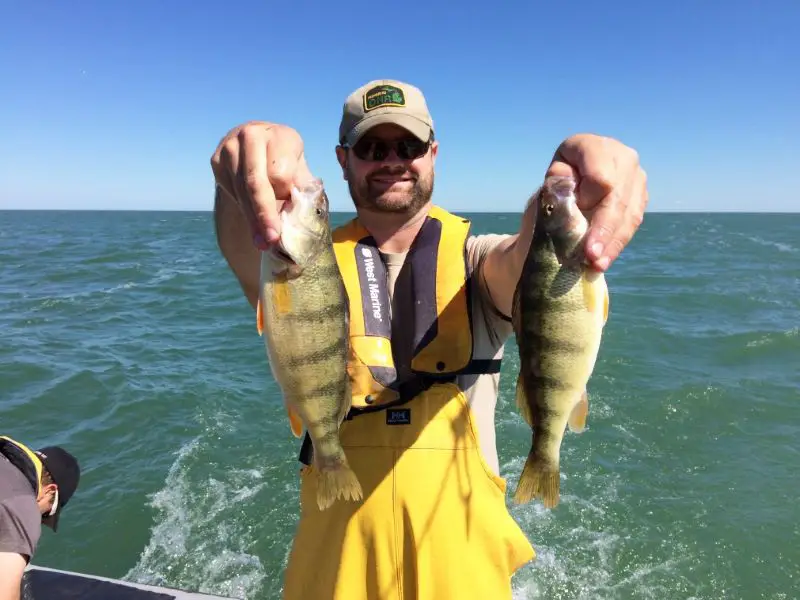Anglers from cold climates know that they need to prepare their boats for the long, hard months of winter. And even in areas blessed with milder weather, if you’re not going to be hitting the water again until spring, it’s a very, very good idea to winterize your boat.
In the south, an unexpected freeze can damage your outboard, costing you big bucks to get it running again. And in the north, you can expect the mercury to plunge to the point that winterizing is a necessity.
But how do you properly winterize a boat?
If you’re looking for a simple, easy-to-follow answer to this question, keep reading!
Why Winterize Your Boat?
Two things work against your boat as it sits out in the winter.
One is simply time. The longer your outboard sits without being used, the more likely it is to experience problems like fuel degradation and interior corrosion. The other is temperature, and if you live somewhere with bitter winters, your outboard can be at risk.
Time is not your boat’s friend
Gasoline breaks down over time, and as it sits in your fuel tank and lines, carburetors, and injectors, it can turn gummy and thick, even leaving varnish-like deposits. Starting and running an outboard with old fuel can be an exercise in frustration, and in the worst cases, can involve draining and cleaning the fuel system.
The engine oil that protects your motor from friction and heat settles to the bottom of the engine and oil over time. And when it’s not cycled through the motor, the pistons and heads are left exposed to air trapped in the engine.
Cold can kill your engine and battery
As temperatures drop and rise during the day, water will condense out of this air, coating the interior of your engine. And without protection, it can begin to rust in as little as 30 days.
But that’s just one problem.
That water vapor can condense into liquid water, freeze, and then expand, damaging delicate parts of your engine. That’s no joke, and it can even happen in the deep south when a sudden, shocking cold front moves through.
Finally, cold kills batteries dead, and proper care needs to be taken to preserve them through the winter. The best practice when you winterize your boat is to store batteries inside if possible.
How Do You Winterize Your Batteries?
Fishing experts don’t recommend storing your batteries on your boat unless it’s housed inside where it’ll be protected from the cold.
And if you want to protect your expensive investment in great power sources, you should follow these steps:
Step 1: Charge the batteries one final time
This will prepare your batteries for long-term storage and ensure that they’re ready to go next season.
Step 2: Disconnect the negative cable and wait a few hours before checking the voltage.
Check each battery with a voltmeter; you’re looking for 12.6V.
Step 3: Disconnect terminals to remove all electrical loads from your batteries.
If you don’t do this, your batteries will lose small amounts of power over time, deeply discharging over the winter and potentially damaging them.
Step 4: Remove your batteries, and store them in a cool, dry place.
Step 5: Either trickle charge your stored batteries or charge them to full once a month
This will help keep your batteries from freezing and enhance their storage life.
How Do You Winterize a 4-Stroke Outboard?
Professional mechanics recommend a series of simple steps to winterize your boat properly, and we’ll offer an easy-to-follow guide any angler can understand.
Step 1: Change the oil and filter
Before you store your boat for winter, change the engine oil and filter whether it “needs” it or not.
Old oil can turn corrosive quickly, and that’s something you really don’t want sitting on your engine parts.
Always use the outboard engine oil (never car engine oil) recommended by your outboard’s manufacturer.
For instance, Mercury outboard owners should use Mercury 4-Stroke Engine Oil, while Yamaha owners should try either Yamalube 4-Stroke Outboard 5W-30 Full Synthetic or Yamalube 10W30 Marine Oil.
Consult your owner’s manual or dealership if you’re unsure of which oil to use.
Step 2: Add fuel stabilizer
Gas goes bad pretty quickly, so you’ll want to add some fuel stabilizer to keep it from degrading.
A product like STA-BIL 360 Marine Ethanol Treatment and Fuel Stabilizer or Mercury Genuine Quickstor Fuel Stabilizer is ideal.
Nearly fill your tank (2 gallons short) with fresh gasoline and mix in the proper amount of fuel stabilizer.
Then, attach a hose and coupler (if necessary) to your outboard and run the engine at idle for a few minutes to allow the stabilizer to circulate.
Stop your engine.
Step 3: Fog it
That oil isn’t going to stay put indefinitely, and as water vapor collects in the engine due to temperature cycling, problems can arise.
To prevent that, you need to “fog” your engine.
For Yamaha outboards that are fuel-injected (EFI), you’ll need Yamaha Yamalube ACC-STORR-IT-32 EFI Engine Storage Fogging Oil.
Start by mixing 1 quart of Yamalube fogging oil in 2 gallons of fresh fuel. Get this ratio right!
Run the outboard at a fast idle for 10 to 15 minutes. When smoke appears in the exhaust, shut the engine down.
It’s that easy!
For Mercury and Honda outboards, the process is a lot more complicated:
You’ll need to pull each spark plug and give the cylinder behind it a 3-second spray with Mercury Genuine Storage Seal or Star Brite Fogging Oil.
Now is also a good time to replace your spark plugs to ensure your engine’s performance next year.
How Do You Winterize a 2-Stroke Outboard?
2-Stroke outboards are pretty easy to winterize on your own, and the steps are easy to follow.
Step 1: Add fuel stabilizer
It’s not just the gasoline in your tank that goes bad, but also the gas in your outboard. So even if you run a removable gas canister, you want to stabilize the fuel that’s left in your engine over the winter.
Start by adding a good fuel stabilizer like STA-BIL 360 Marine Ethanol Treatment and Fuel Stabilizer or Mercury Genuine Quickstor Fuel Stabilizer.
Be sure to measure carefully – you want the right mix of gas and stabilizer.
Then, attach a hose and coupler to your outboard and run the engine at idle for a few minutes to allow the stabilizer to circulate.
Leave your engine running!
Step 2: Fog the carb
With your outboard running, disconnect the fuel.
As the engine begins to sputter and starts to die, it’s time to fog.
Spray a product like Star Brite Fogging Oil directly into the throat of the carburetor. That will probably kill the engine, which is OK.
Step 3: Fog the cylinders
Now, you’ll need to remove each spark plug and give each cylinder a three-second spray of fogging oil.
Then, slowly pull the starting handle to move the cylinders, spreading the fogging oil across the pistons as well.
Go ahead and replace the spark plugs, and your outboard should start right up next spring.
How Do You Winterize an Evinrude E-Tec G2 Outboard?
Really easily!
Evinrude’s E-Tec G2 outboards do most of the work for you. According to the engineers at Evindude, here’s how you do it:
Step 1: Add fuel stabilizer
Again, you’ll want a product like STA-BIL 360 Marine Ethanol Treatment and Fuel Stabilizer. Mix it carefully to the proper ratio.
Step 2: Connect your engine to a hose with a coupler
You’ll need water circulating in your engine, as the next step will start and run it automatically.
Step 3: Navigate through to winterize mode and click the button “Winterize Engine”
This will double-oil your engine, start and run it for 90 seconds, and then shut it down automatically.
Good news – that’s it!
Final Thoughts
Winterization is a great time to take care of basic maintenance, as well as prepare your boat for cold-weather storage.
And while the steps on how to winterize your boat can require some DIY skills to accomplish, having your boat run well next season is absolutely worth it.
As always, we’re here to answer any questions you might have, so feel free to leave a message below!
Related Reading Like Winterize Your Boat
5 Essential Safety Tips When Boating & Fishing With Dogs
5 Easy Steps To Get Your Boat Ready For Summer
Great Boat Names – 14 Bits Of Transom Charm Found In The Boatyard




